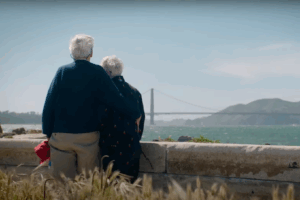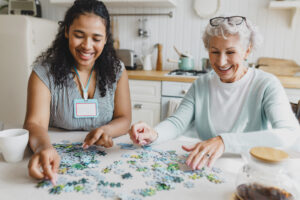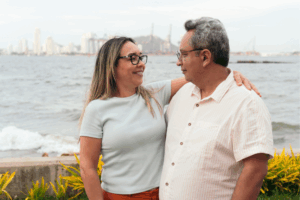Most of us want to extend our lives for as long as possible. The self-preservation instinct is so strong that we hardly question it. We may wonder why anyone would want to end their lives before their natural end. But with some older adults, wanting to die is not uncommon, whether through suicide or the desire to die with dignity. These two phenomena may seem similar, but there is a nuanced difference between suicide and dying with dignity, as well as the motivations behind each.
The Difference Between Suicide and Dying with Dignity
Suicide is the deliberate ending of one’s life and typically occurs while one is still judged to have many years of quality life ahead. Dying with dignity[1.“Dying With Dignity,” https://www.deathwithdignity.org/.], in contrast, is refusing medical treatment when faced with a terminal or chronic illness.
Most people have an understanding of what’s involved with suicide. But what does dying with dignity look like? Many times, an older adult will make their wishes for end-of-life care known. But gathering and preparing important documents like advance directives, health care proxies, and wills does not necessarily indicate a desire to commit suicide. In many cases, this is simply evidence of prudent planning for the future. Helping your loved one with this is an appropriate way to address the issue of dying with dignity.
Why Do Older Adults Want to Die with Dignity?
Here are just a few reasons older adults prefer to die with dignity, even though their lives could potentially be extended:
They suffer from a terminal illness. Many older adults don’t see the point in prolonging a life that will only spiral downward. They want their friends and loved ones to remember them as they were during the best years of their lives.
They fear pain. Terminal illness often comes with pain. With no feasible option for relief until the patient expires, some older adults don’t want to prolong their suffering.
They fear a loss of dignity. Feeding tubes, breathing tubes, and having strangers toilet you — these are all possible scenarios with a terminal illness. Understandably, many people don’t want to go through this.
They want to make their own choices. Choosing how to live one’s life is at the fundamental core of a person’s independence. This includes how to die as well — when, where, under what circumstances, by what method, and who will be there. Just as older adults want to have autonomy in life, most want to retain it until the end.
They are at peace. It may sound strange to their younger counterparts, but the truth is, many older adults are more accepting of death and feel a sense of peace about the end of life.
Why Do Older Adults Commit Suicide?
There are also many reasons that older adults wish to prematurely end their lives. They include the following:
Depression. Depression is the chief cause of suicide in older adults.[2.“Elderly suicide,” https://www.suicide.org/elderly-suicide.html.] Getting older can be a difficult process as close friends and family that you once knew pass away, and the difficulty of the aging process should not be discounted when considering depression in older adults.
Isolation/loneliness. These factors are both strong contributors to depression, and older adults are more likely to experience them than the general population.
Feeling like a burden. Many older adults are in the care of their family, with no outside help. If they see their loved ones struggling, and the toll it takes on their own health, work, and relationships, older adults may feel guilty.
Loss of meaning. It’s also common for older adults to feel “useless” during retirement. After working for decades, many struggle with just relaxing and enjoying their free time. They feel the need to contribute to society in a meaningful way but are unsure or unable to achieve this goal.
You’ve Determined It’s Suicide. Now What?
So you’ve given the subject a great deal of thought and finally determined that your loved one may be suicidal, or at least at risk. It’s just not a matter of dying with dignity anymore. Now what do you do? In the short term, calling a suicide hotline or 911 is the first step if the danger is imminent.
Following up with your loved one’s physician and getting them counseling services should be considered. Finally, many of the issues older adults face that lead to suicide can be addressed on a daily basis. For instance, having a home health aide is one option. An aide can monitor pain, offer companionship, and provide more independence by helping the older adult remain in their own home.
It’s easy to confuse signs of suicide with the desire to die with dignity, but the difference between the two are crucial. Knowing the signs of each is the first step to taking the right steps to avoid the first, and, in time, accept or even facilitate the latter.
If you are unsure of how to best help an aging loved one, the trained and compassionate staff at the Institute on Aging is here to help you make that decision and gain the best in at-home care for older adults. Contact us to find out more.






